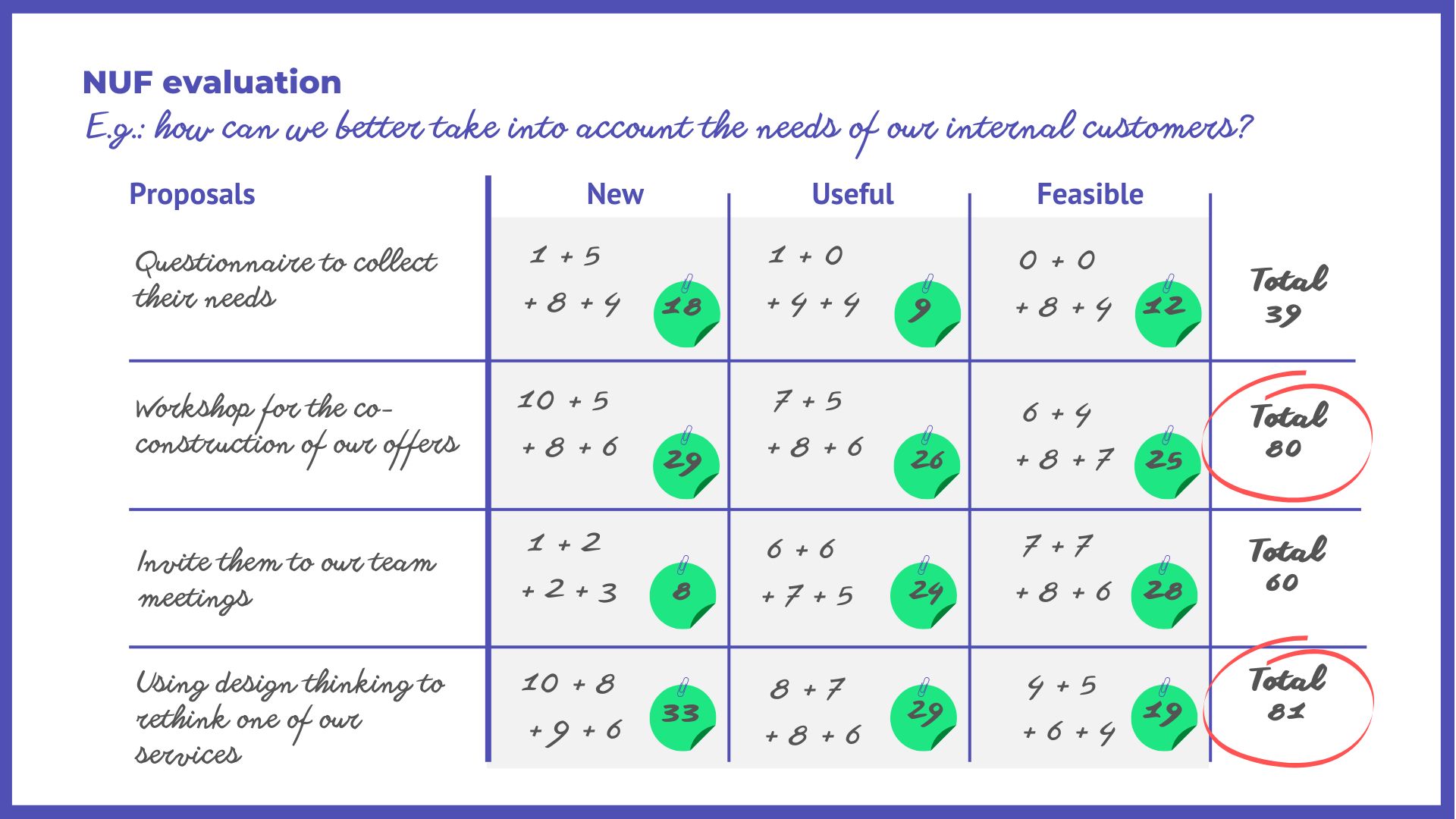To save colors and take care of the planet, print this text in shades of gray
Criteria-based voting
Streamline the selection process by analysing the proposals from different angles
Pratique
Aim
Criteria-based voting is a convergence and ranking tool that you can use following a collective intelligence task that resulted in several solutions being generated.
Instructions
Time needed: 30 minutes
Materials :
- one criteria table per person
- something to write with
Create a table with one row per idea in the left column and then as many extra columns as there are voting criteria. The furthest column on the right can be used to display the total number of points per line.
The NUF table presented below is one example of criteria-based voting, based on three dimensions: New, Useful, Feasible.
Key steps
- Before you do anything else, explain the criteria:
- New: “Have you already tried this idea in the past?”
- Useful: “Does the idea actually respond to the problem or original intention?”
- Feasible: “Can you quickly and easily put the proposal into effect?”
- Each participant must then evaluate all the ideas proposed and give each one a score from 0 to 10 for each criterion (0 = criterion not fulfilled at all, 10 = criterion completely fulfilled).).

- The group then shares their individual scores and totals them up in order to rank the proposals. During this part of the task, try to refocus the group if they digress and prevent any debates from starting up.
- Debriefing: once the totals have been counted, some ideas will come out on top, and you can see how varied the spread of criteria is.
You can ask the participants to share their feelings and impressions and to explain the distribution of their scores. This time can help the group to finalise their choice and prevent any future frustrations or disagreements.
E.g.: an idea may have received a lot of votes, yet isn’t feasible. In this case, the group may look further into the feasibility of the solution or decide to abandon it, despite it seeming like a great idea to start with.
Trucs et astuces
- Votes must be allocated quickly based on “feeling”. There’s no need to think about the details too much!
- You could also get the participants to give a group score following a discussion (go around the room verbally, make adjustments and make the final decision).
- Encourage the participants to be clear-cut with their votes, as too many neutral scores (averages) hamper the decision-making process.
- Of course, you don’t have to use the NUF table: you can define your own criteria and follow the same steps.
- Looking at the total number of points for each criterion also gives an indication of your group’s attitude in general!
E.g.: if the feasibility criterion gets an overwhelming score, you know you’re in the presence of a very pragmatic group.